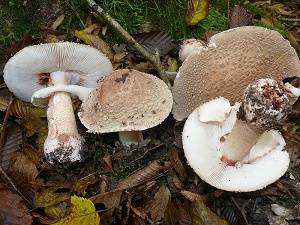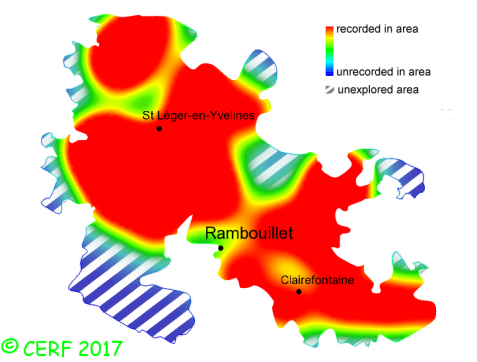| Amanita rubescens Pers.:Fr. |
|
|
|
|
|
|
The cap is brown, vinaceous red, sometimes paler, globular at first, then soon expanding to convex then finally flattened; its margin is smooth and sharp. The cap surface is spotted with grey-reddish to grey-brown warts or patches, easily washed away, arranged concentrically and denser towards centre, not viscid nor sticky. The stem is white, turning red-brown especially at the base and wounds, bulbous, with a membranous striate ring. The flesh is white but reddish beneath the cap surface, turning reddish in wounds, turning red when exposed to air, especially in stem base ; its taste is mild then acrid; the odour is not distinctive; its texture is fibrous. The gills are white, free, crowded . The spore print is white. This species is mycorrhizal. It grows on the ground, in coniferous and deciduous woods, on poor soils, on a rather non calcareous soil. The fruiting period takes place from April to December.
Chemical tests : none. Distinctive features : Pink brown to fleshy pink cap, covered with irregular greyish pink patches (not warts); gills and flesh blushing red when touched or exposed to air; easily peeled cap surface; stem reddening when bruised, especially at bulbous base; striate membranous ring Amanita rubescens is very frequent and present everywhere in the forest of Rambouillet, and is very frequent, more generally speaking . | ||
|
page updated on 14/01/18

